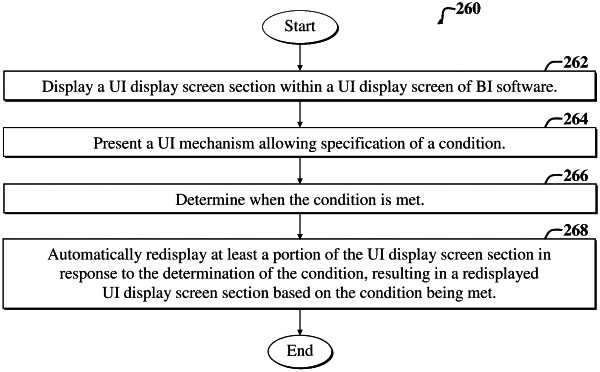| CPC H04W 4/50 (2018.02) [H04N 7/15 (2013.01); H04N 21/60 (2013.01); H04W 4/025 (2013.01)] | 20 Claims |

|
1. A tangible processor-readable storage device including instructions executable by one or more processors for:
providing a first User Interface (UI) control for accepting an input query;
retrieving content in accordance with the input query, resulting in retrieved content;
displaying the retrieved content in one or more UI cards showing plural visualizations based on the retrieved content, including a first visualization and a second visualization, wherein the first visualization is characterized by plural data dimensions, wherein the second visualization is characterized by a filtered version of the plural data dimensions, wherein the first visualization and the second visualization are displayed simultaneously on a display screen of a user, and wherein at least one of the UI cards is flippable to reveal additional information on the back of the flipped UI card, wherein the additional information is additional relative to the retrieved information;
providing a second UI control suitable to enable the user to rate a usefulness of one or more of the first visualization or the second visualization; and
determining which of the one or more UI cards the user prefers based on the rate of the usefulness.
|